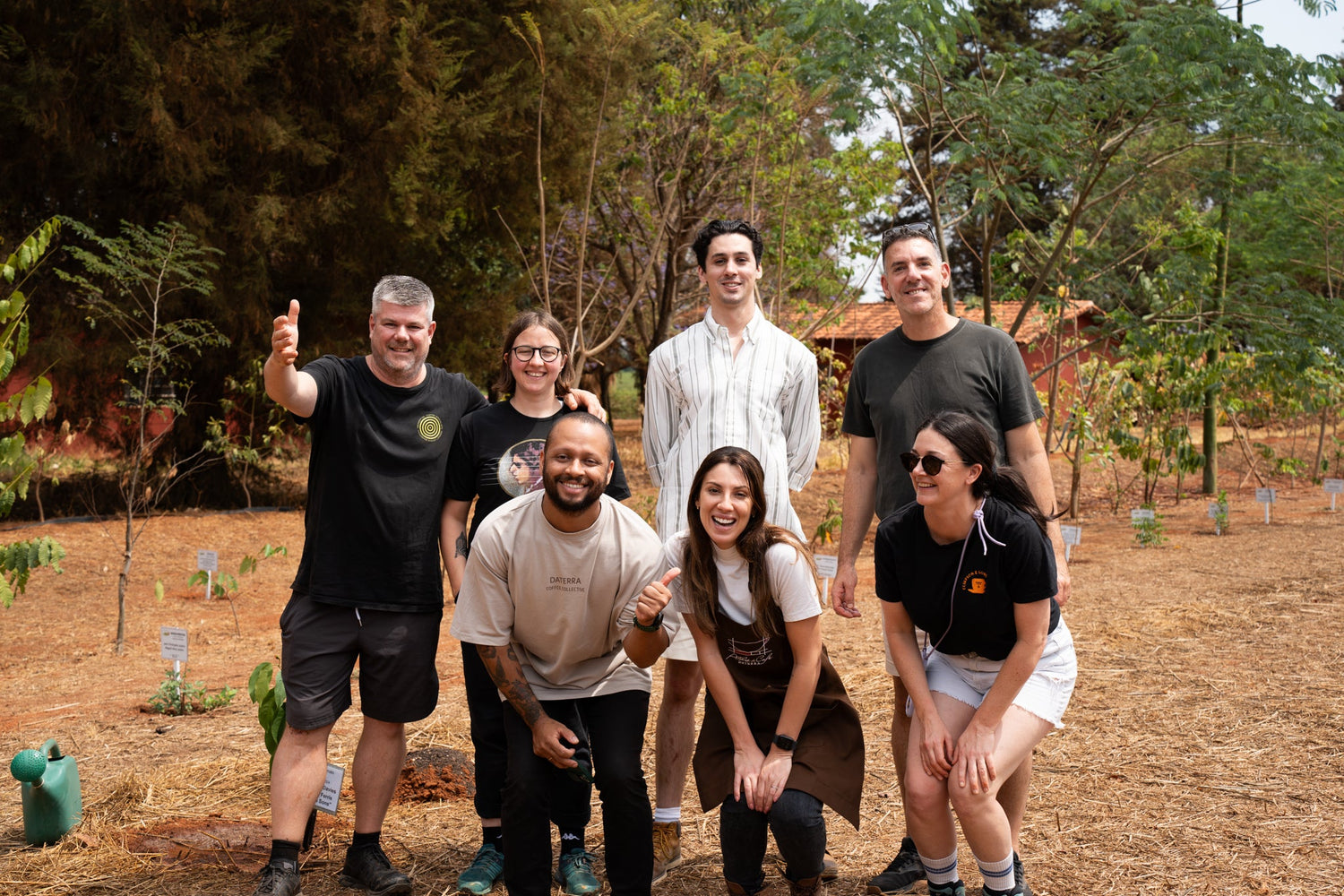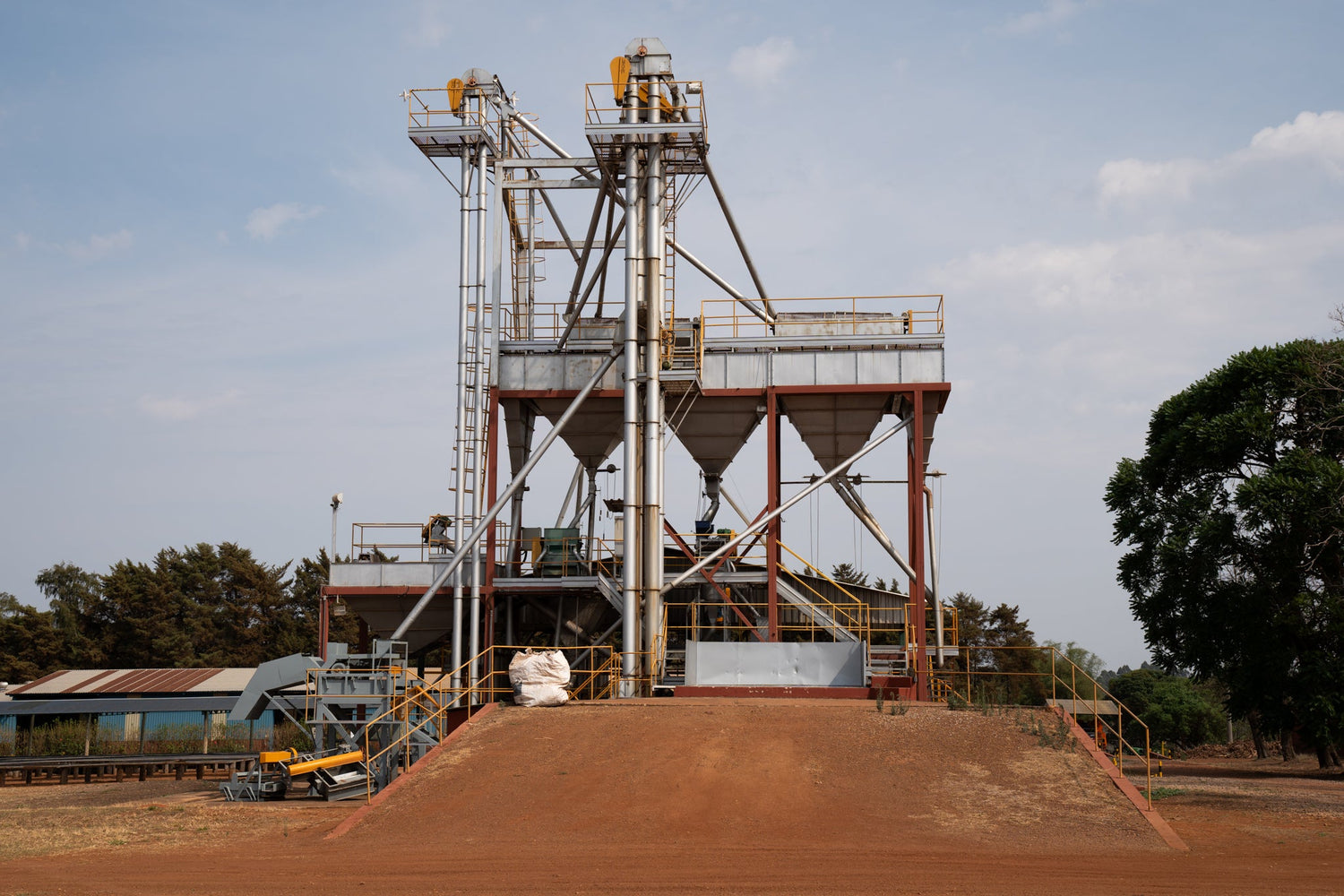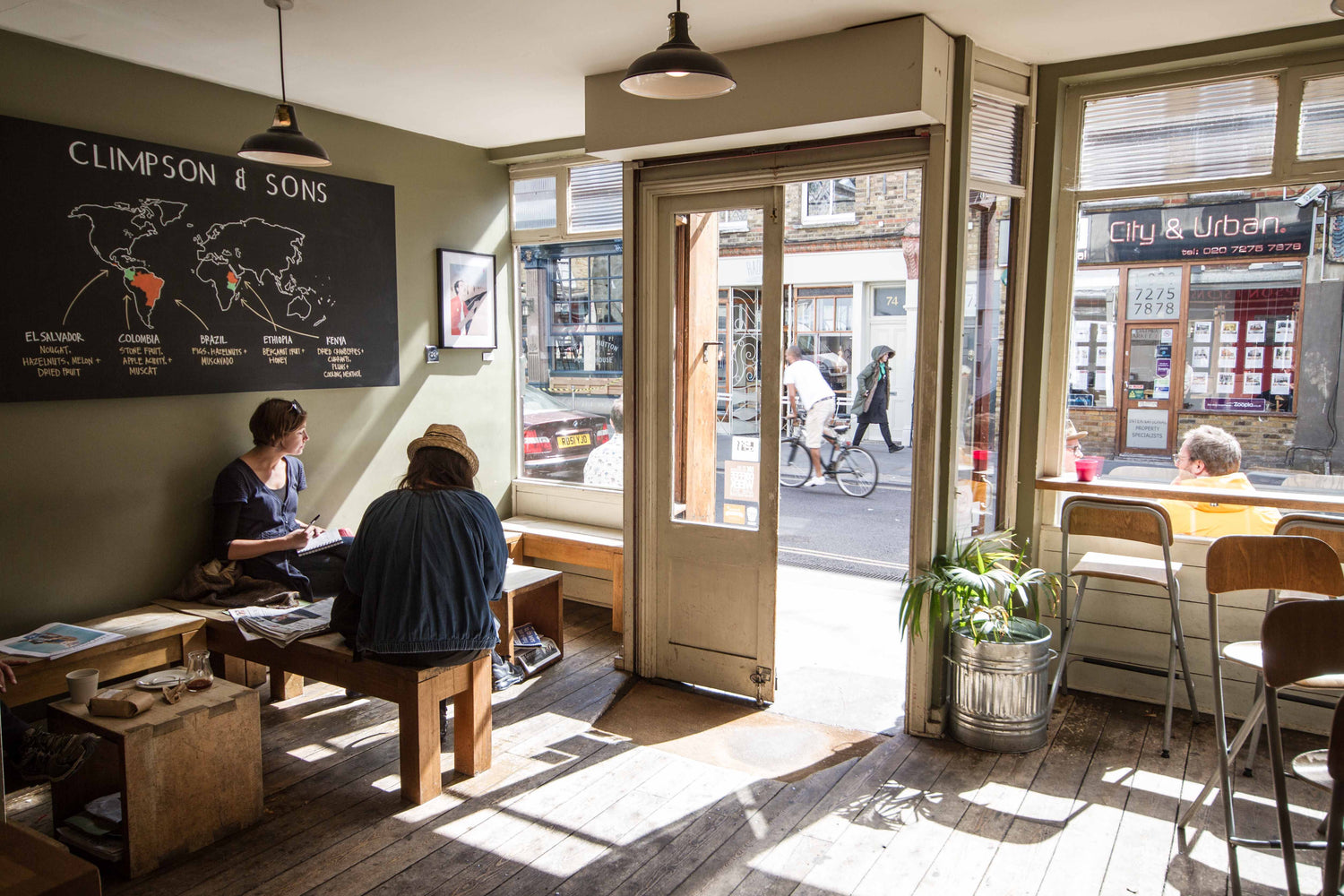Its 2021 and we are all reminiscing about past travel experiences in the absence of the freedom to do so. Life has become so routine that its hard to remember life being different, so its a great pleasure to share some notes with you from a trip a seemingly way back in time now, especially as its very relevant to our coffee offering this year.
In August 2019 Climpsons made the well-worn trek to Minas Gerais, Brazil again to visit our coffee partners throughout the region. This time we travelled with the inimitable Bruno de Souza from touchdown to departure, and given he seems to know every coffee person in the country, he was the perfect coffee tour guide even when stepping onto competitor plantations.
Myself, fellow Climpson Jen Aitchison and long-term partners Iva Jakes from Bistro 8 in Prague and Sasha Rainery of Fix Coffee fame all met in Rio de Janeiro before flying on to Belo Horizonte and jumping in The Bruno Mobile. It was early August so we arrived in time for some picking as well as the usual processing and milling activities.
The majority of our tour was fairly similar to the one covered in the 2-part Brazil Trip 2016 Blog from four years ago, so for this piece I would like to drill deeper into some of the new revelations and insights from this particular trip.

“A spot of local history”
We got to spend a good amount of time in Bruno’s local area, the hills and valleys surrounding the coffee-town of Campos Altos (which was established in 1953). The name translates to “high fields” which will help you visualize the location - a grid of housing, shops and mainly agricultural businesses located amongst the classic rolling hills that have turned out to be perfectly suitable for coffee growing.
We dropped by and visited Renato, who has a wonderful shade-grown plantation with minimal output at 60 bags per year. His commitment to sustainability and wonderful small-crop coffee stood out to me as the kind of producer we would love to get on board at Climpsons.
The first coffee plantation in Cerrado was started by two Japanese men, Shigeo Hayakawa and Teruo Iwano, in 1971 who believed it was a good place to start a coffee plantation based on the work of grassroots coffee projects in other parts of Minas Gerais.
We drove around the outside of its perimeters as it exists today. Its still growing coffee amongst other products these days but bears little resemblance to the pioneering plant-out done in the 70s. I was reminded of the viticultural region around the Hawkes Bay in New Zealand but with a tropical twist.
There's a movement to make Campos Altos its own “Denominacion de Origen'' which is going to get through the bureaucratic hoops by the looks. Many see Campos Altos as the unofficial capital of the Cerrado for coffee growers but for now that distinction remains in Patricinio, near our partners at Daterra.
“Worst Year Ever … For Immature Beans”
2019 was Bruno’s worst year ever for immature green beans (his words), and he was far from alone with an average (estimated) of 45% immature beans harvested across the country. Add to that some very nasty frosts which we witnessed the effects of first hand at Fazenda Guimaraes, its fair to say the 2019 growing season was very challenging.
The challenge was risen to with many producers improvising and combining some prior experiments to combat the lack of ripe fruit with sorting and extended fermentations. A lot of people took to treating their 2019 “greens” out of necessity with good results. In a future blog we will take a look at what Daterra Estate did under the same conditions.
Bruno surprised us one Sunday morning with a blind cupping before breakfast, the coffees were already made when we came to the table, so we had no idea what we were trying until he explained.
“The Greens”
The greens are completely immature green beans and Bruno applied extended fermentation to the normal process. Running water flowed in and out of the tank, as opposed to a static tank of water and usually a much shorter time in the water. The colour of the water is green after 3 days, and brown after 7 days.
When we cupped, we picked the fermented immature (but fermented) Rubi over the mature (normally processed) Rubi. Normally immature beans give a lot of astringency so this was a major surprise.
The pulping process is also more difficult with immature beans, the fermentation is part of preparing them for pulping. Much to Bruno’s surprise, he achieved 95% pulping success which is significant.
When we discussed the coffee, I was expecting maybe 20% greens in the bowl mixed with mature beans, but in fact the bowl contained 100% greens. I thought it had a light acidity and could have been Costa Rican. It was sweeter than I would usually expect. It was delicious, and begs the question about enhancing sweetness after growing has been stopped (due to picking of course). Other than bananas and mangoes, it is rare for fruit to develop more than a slightly sweeter perceived sweetness once severed from the tree (Brix was not used to test actual sugar levels - more work to be done there).
“The one I call chocolate”
Bruno presented another bowl of super sweet coffee which had an unusual cocoa powder aroma that carried into the cup.
Bruno said “The colour of the cherry after it is dried is a lovely cocoa hue. This was a complete accident. To achieve this we washed, got the floaters out (20%) and then it spent 7 days in clean water - accidentally. And it turned out to be lovely.”
It also helps with this experimental approach that he uses 100% patios for drying, as opposed to the very-common-in-Brazil mechanical drying. On the patio the coffee can be turned specifically and raked with care to eke out a delicately dried finished product.

Another example of trial and error producing delicious results in a difficult harvest. One advantage I can see for Bruno compared to some of our larger scale partners is that he doesn’t rely solely on one-pass mechanical harvesting, but rather spends time with his team amongst the trees and gets a sense for what might be possible, before passing 2-3 times according to maturation and the amount of dried berries on the coffee trees, as well as a hand-picking pass. One example new to us in 2019 was the tree-dried cherries which Simon explains below.
Simon says:
With so many unique processing experiments on the go we are lucky to receive a custom list of options from Bruno and a few select varieties set aside with our customers in mind.
The very first coffee we bought in from Esperança was Bruno’s classic natural processed Rubi and, without fail, this has been our favourite variety each year since. Never content to rest with one successful process Bruno split the 2020 processing of the Rubi harvest into 4 different methods. Now holding down 50% of our trusty Broadway Blend is the tree-dried natural process. This particular process is almost entirely unique to the dry Cerrado climate where cherries can be left to dry on the tree rather than picking at a specific timing. This goes beyond the typical Brazilian flavour profile with the slower drying leading to a dense concentration of dried fruit and cocoa tasting notes.
For the 2020 season Bruno was also able to repeat his trademark Full Moon harvest cycle. Inspired by the success of biodynamic practices used in other industries he now has the capacity to try this on his own coffee. This year both the Rubi and Topazio cherries reached maturity on the same week as a full moon and, in totally reasonable fashion, Bruno insisted on picking this by moonlight, at midnight... We’re not superstitious but after the success of this project in 2019 we thought it best to buy both of those varieties so that we can all compare the mystical power of nature’s timing.
The Future
As usual it was sad to leave Bruno and friends behind. We caught up with his daughter Julia and husband Ivan for a night in Belo Horizonte and had a blast exploring the central market and some fine dining which blew our palates away.
Brazil is a progressive country full of innovation, with a long established supply chain to the shores of the UK and the wider world which has remained intact (generally) during the pandemic. No one of course saw COVID-19 coming and we have kept in close radio contact over the months. It hasn’t been easy for anyone, with Brazil facing a major crisis that has resulted in staff shortages and logistics nightmares in what has been ironically one of the best harvests Bruno has ever seen (2020).
Thankfully we can look forward to the 2021 coffees and beyond, and witnessing the continued growth, adaptation and resilience of producers who are key to our own economic survival.
We are so grateful for the friendship of the Minas Gerais coffee producers. Please enjoy Bruno’s 2020 coffees knowing they were produced against the odds! Do let us know what you think of the coffee in the comments below. You can pick up a bag of Bruno's Single Origin Fazenda Esperança Rubi here.




